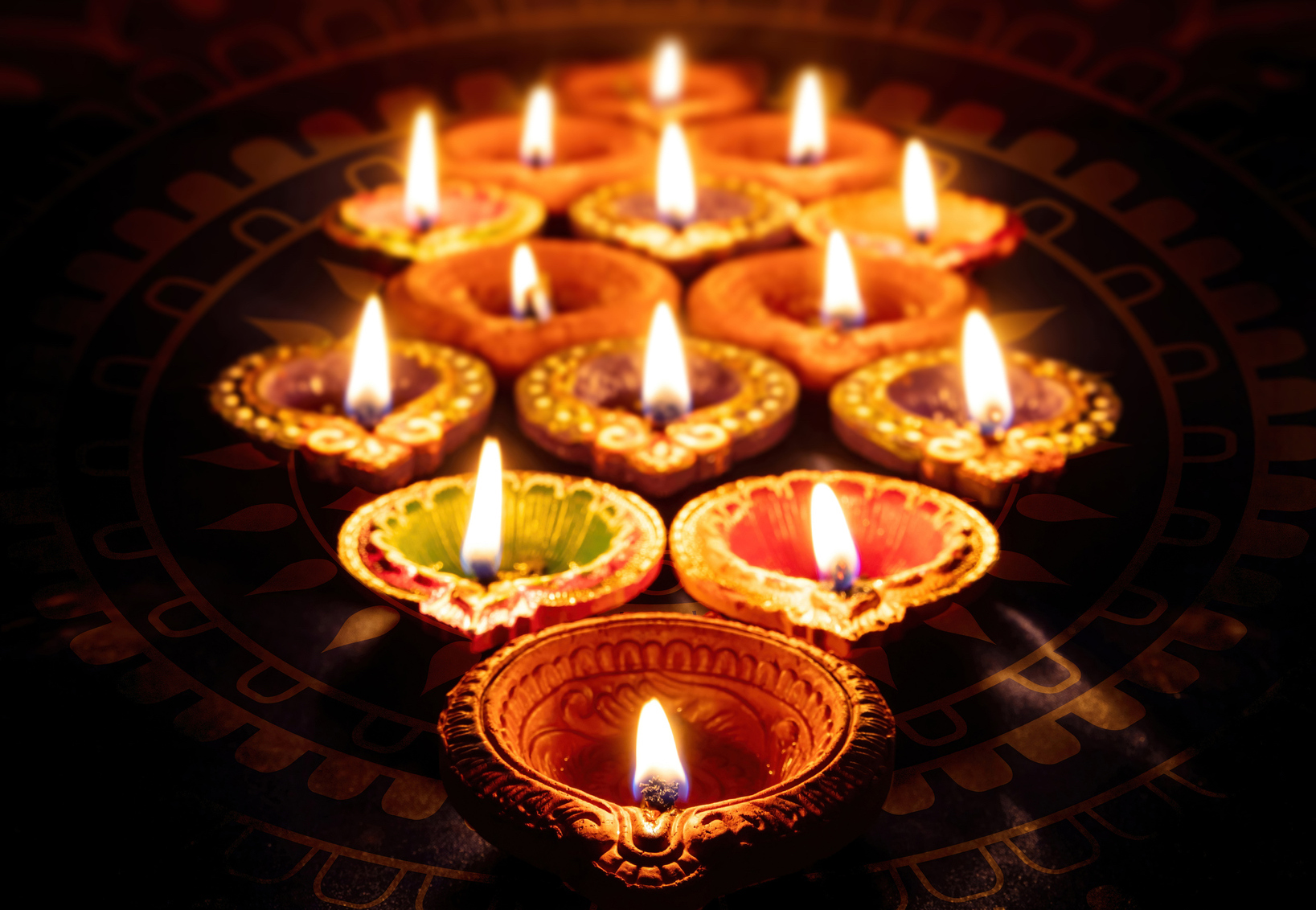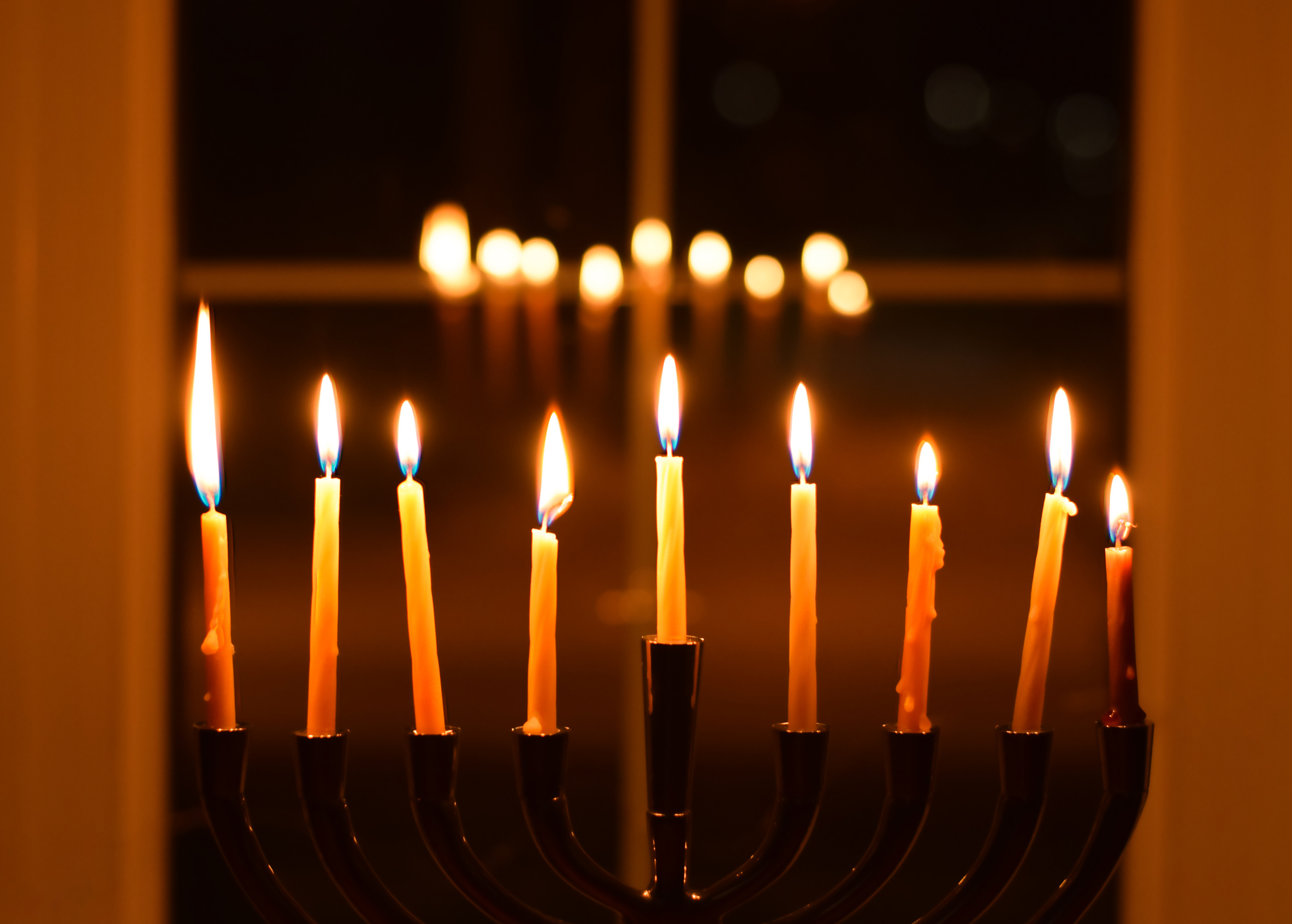Finding Light in Dark Times
Professors Deven Patel and Steven Weitzman discuss why Diwali and Hanukkah, both festivals of lights, can act as symbols of hope.
The calendar flip to November often marks the start of two months centered around family and celebration, a time to slow down and reflect. That notion may seem fraught as 2023 draws to a close against a challenging global backdrop.
Yet two holidays—Diwali, celebrated this year in mid-November, and Hanukkah, in early December—are festivals of light in both the literal and figurative sense. Deven Patel, an associate professor in the Department of South Asia Studies, and Steven Weitzman, Abraham M. Ellis Professor of Hebrew and Semitic Languages and Literatures in the Department of Religious Studies, say the holidays can serve as a reminder that even the bleakest of times must eventually come to an end.
“Hanukkah is a holiday about hope. It’s a holiday about survival,” says Weitzman, who is also Ella Darivoff Director of the Katz Center for Advanced Judaic Studies. “And in this very dark period, which is still ongoing and feels hopeless to a lot of people, it’s about the possibility of finding light again in the most profound periods of darkness.”
Patel reiterates the sentiment about Diwali, also known as Deepavali for the Sanskrit words meaning “row of lamps” or “row of lights.” “The holiday comes at the darkest time of the year, and what follows is a celebration of light. The religious aspect is important, but in many ways, it also transcends religion, celebrated by Hindus, Buddhists, Jains, Sikhs, Muslims,” he says. “The Diwali season comes before the rainy season, at harvest time, and it brings light to shed the darkness of the nights to come.”
‘The Lamps Light the Way’
Diwali, observed by millions of people in India and the Indian diaspora, spans five days, with the midpoint falling on the eve of the new moon, called Amavasya, between the months of Asvina and Kartika on the Hindu calendar (usually sometime in October or November). On this night, moonlight barely appears in the sky.
“So, there’s the physical darkness,” Patel says, “but many also see it as a new beginning.” For example, he notes, in parts of Western India, the day after Diwali marks the first day of the new year when the books are cleared, so to speak, and the year begins anew.
Most commonly connected to Diwali, however, are the clay lamps placed inside and outside of homes, lit for the five-day duration. “They are an invitation,” Patel explains. “You go to your neighbor, your neighbors come to you.” What follows is celebration and an exchange of sweets—a yogurt dessert called shrikhand, for instance, or jalebi, a deep-fried dough dipped in honey and rosewater.
In this very dark period, which is still ongoing and feels hopeless to a lot of people, it’s about the possibility of finding light again in the most profound periods of darkness.
“Deepavali has a festive, outward-looking nature to it,” Patel adds. “And the lamps light the way.” They also signify inner light, victory over evil. Though the details of this narrative vary by region, most versions include triumphs by men who are considered incarnations of the Hindu god Vishnu. “Divinities are honored, and various stories from Sanskrit epics are celebrated, with a focus on the defeat of demonic forces,” Patel says. “There are many symbolic elements of darkness being overcome.”
‘Make the Holiday Brighter and Brighter’
Hanukkah’s story has a similar through line of triumph: A rebellion led by a group later known as the Maccabees defeated the Greek king Antiochus IV, who had, for reasons lost to history, made it illegal to practice many facets of Judaism. Antiochus had also tried to transform the Temple of Jerusalem into one that worshipped the Greek god Zeus.
“Eventually the Maccabees reconquered Jerusalem and rededicated the Temple. Hanukkah is a commemoration of that victory,” Weitzman says. “And this is a historical footnote, but actually, before anyone used the word Hanukkah to describe this moment, a historian named Josephus used the word ‘lights.’ So, early on, it was known as the Festival of Lights. We don’t know all the details but there was an early association between this holiday and the ritual lighting of lamps—first the lamp in the Jerusalem Temple, then lamps kept at home.”
For the modern version of the holiday, Jewish people light a nine-branch menorah, with one candle called the shamash used to light all the others. Historically, sages debated whether to start with all eight candles lit, removing one each day, or start with one lit and increase the numbers daily. “Jews today follow the practice of a sage named Hillel who said, ‘You should add one light every night to make the holiday brighter and brighter and brighter,’” Weitzman explains.
And though he suggests that the oft-told reasoning for Hanukkah’s duration—the one in which a single day’s worth of oil found in the destroyed temple actually lasted for eight nights—is probably legend, “legends can reveal a great deal about the people sharing them,” he says. “In this case, the people in that story were a minority. They were able to overcome their limitations through the help of God. That miracle celebrates the capacity of underdogs to triumph against the odds.”
‘Reasons for Hope’
Hanukkah in America is often thought of as the Jewish equivalent of Christmas, but it is not a major holiday in Judaism, according to Weitzman. To those who observe Diwali, on the other hand, it’s one of the biggest and most important of the year, says Patel. Yet despite the differences of these two holidays, their common ground—a connection to light and hope, to defeating evil—matters perhaps more now than ever.
“It’s very important that these holidays exist,” Patel says. “We may live in private worlds for most of the year, but we also belong to a public space. Our neighbors may do things differently than we do, but this is a time for extending a celebratory hand to everybody around you. It doesn’t wash away all the darkness. But there’s no way we can carry on in the darkness forever. I hope that no matter what’s happening in your life, the season at least allows you to step outside of your own suffering.”
As Weitzman puts it, the holidays offer a reminder not to lose faith. “As full of despair as the world is right now, the holidays remind us that hope can be found in dark and improbable places.”




